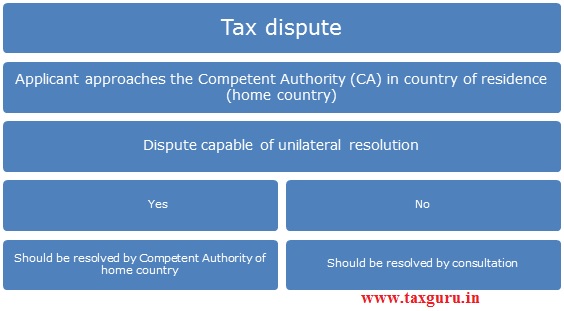The mutual agreement procedure is a well-established means through which tax administrations consult to resolve disputes regarding the application of double tax conventions. This procedure, described and authorized by Article 25 of the OECD Model Tax Convention, can be used to eliminate double taxation that could arise from a transfer pricing adjustment.
Article 25 sets out three different areas where mutual agreement procedures are generally used.
- The first area includes instances of “taxation not in accordance with the provisions of the Convention” and is covered in paragraphs 1 and 2 of the Article. Procedures in this area are typically initiated by the taxpayer.
- The other two areas, which do not necessarily involve the taxpayer, are dealt with in paragraph 3 and involve questions of “interpretation or application of the Convention” and “the elimination of double taxation in cases not otherwise provided for in the Convention”.
- Paragraph 10 of the Commentary on Article 25 makes clear that Article 25 is intended to be used by competent authorities in resolving not only problems of juridical double taxation but also those of economic double taxation arising from transfer pricing adjustments made pursuant to paragraph 1 of Article 9 (Article 9 – Associated enterprises).
- Juridical double taxation
When source rules overlap, double taxation may arise i.e. tax is imposed by two or more countries as per their domestic laws in respect of the same transaction, income arises or is deemed to arise in their respective jurisdictions. This is known as “juridical double taxation”.
- Economic double taxation
‘Economic double taxation’ happens when the same transaction, item of income or capital is taxed in two or more states but in hands of different person.
Categories of Disputes covered under MAP
Mechanism under MAP
- Double Taxation Avoidance Agreements (‘tax treaties’) are available for capturing and curtailing juridical double taxation.
- Tax treaties generally do not cover instances of economic double taxation.
- MAP provides relief in cases of economic double taxation.
- MAP also provides relief in cases where automatic relief, such as tax credits, tax exemption, etc. are not available
Steps involved in the MAP application process
- Brief facts and background of the case must be summarized
- Contentions of Indian Revenue must be summarized in the application
- The net tax and interest impact only by virtue of transfer pricing adjustment is computed
- Take note of transactions only relating to one country (in one application), e.g. USA, UK, etc.
- All documents including tax returns, TP study, notices, submissions, orders, etc. must be furnished.
- Relevant judicial precedence and their applicability to taxpayer’s case must be demonstrated.
Typical MAP process in India
- Overseas and Indian CAs would initiate negotiation and attempt to reach an amicable resolution
- CAs may set up certain procedures/guidelines which they will adhere to during the negotiation process
- In case the CAs reach a resolution, the proposed agreement would be communicated to the taxpayer for his acceptance
- Taxpayer has option not to accept the agreement in case it is detrimental.
Outcome of MAP process:
- The Assessing Officer gives effect of the decision of the MAP, after receiving instructions from the CCIT / DGIT (within 90 days of receiving instructions)
- If taxpayer is aggrieved by decision of the Competent Authority, he may reject the decision and go ahead with the remedies under the domestic law.
- If remedies are not granted by the domestic law, the taxpayer may apply to the Competent Authorities again for subsequent years.
- Decision of a Competent Authority is generally case specific and not a precedent for the taxpayer for subsequent years or other taxpayers on same issues.
Drawbacks of the MAP process
- Time limits under domestic law may make corresponding adjustments unavailable if those limits are not waived in the relevant tax treaty.
- Mutual agreement procedures may take too long to complete.
- Taxpayer participation may be limited.
- Published procedures may not be readily available to instruct taxpayers on how the procedure may be used; and
- There may be no procedures to suspend the collection of tax deficiencies or the accrual of interest pending resolution of the mutual agreement procedure
Indian Statutory regime – MAP
| Rule 44G | Rule 44H |
| Applicable to resident assessee | Indian Competent Authority receives a reference from Competent Authority outside India, he shall call for records and endeavor to arrive at a resolution. |
| Aggrieved by action of the tax authority outside India | Resolution arrived at shall be communicated to Chief Commissioner or Director General of Income-tax in writing. |
| Such action is not in accordance with the agreement or tax laws | Assessee can give his acceptance to the resolution and withdraw the appeal, if any, pending on the issue which was the subject matter for adjudication under MAP. |
| May make an application to Competent Authority in Form 34F in India to invoke MAP | Assessing Officer to give effect to MAP within 90 days of receipt of the same by Chief Commissioner or Director General of Income-tax, subject to conditions fulfilled. |








